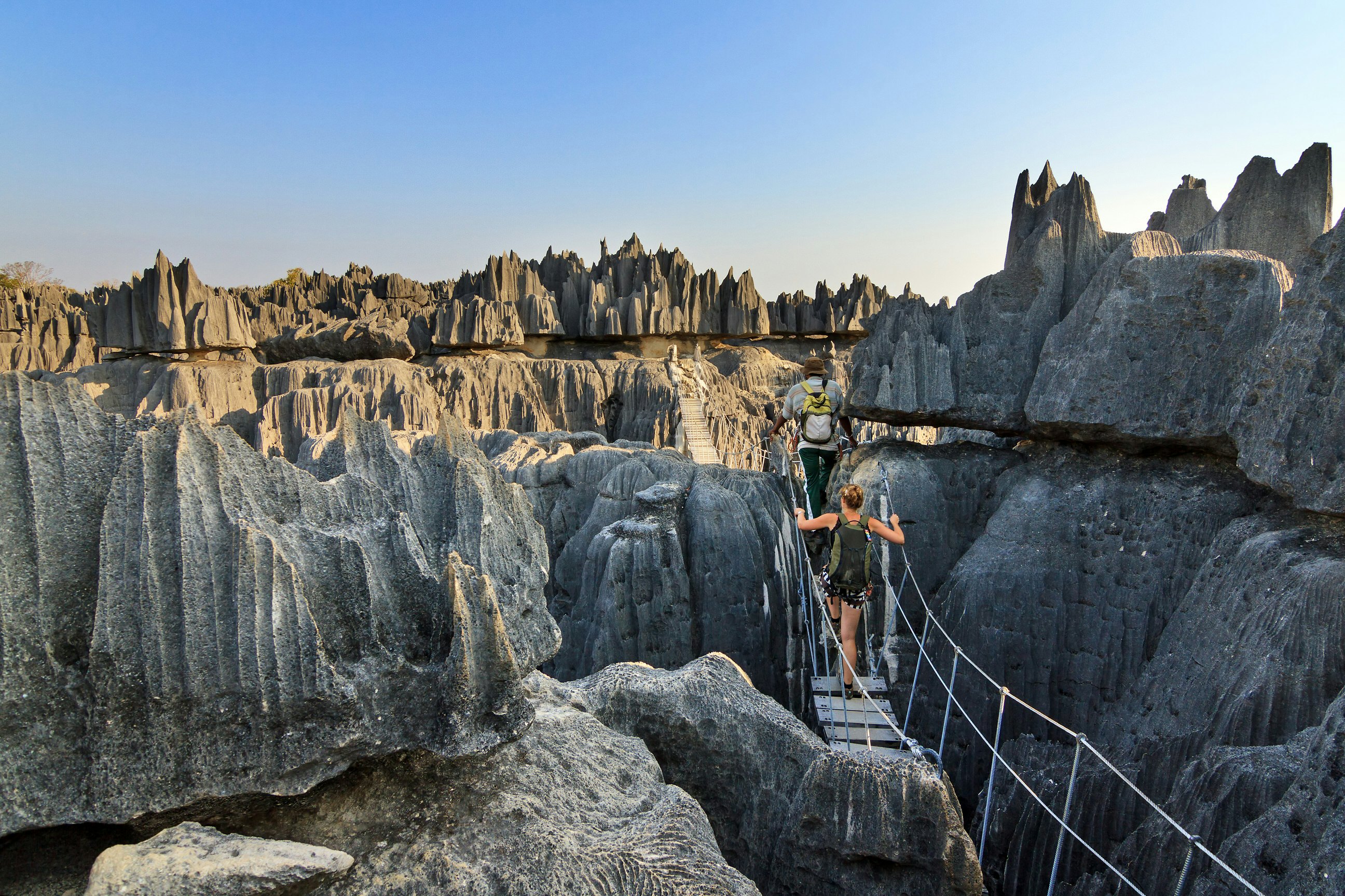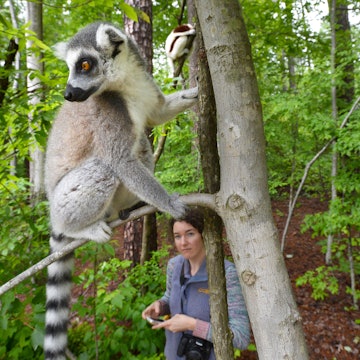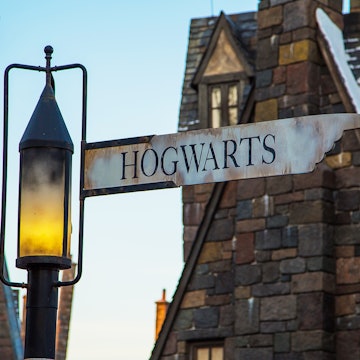

Two rock climbers on the 450m monolith of Karimbony, Tsaranoro Massif in Parc National Andringitra © David Pickford / robertharding / Getty Images
You can blame DreamWorks and David Attenborough if all you know about Madagascar is that it’s the home of curious, charming lemurs and lithe-tongued, colour-changing chameleons. The wildlife – and indeed the plant life – is incredible, with 90% of it endemic to this island where life has evolved in isolation since it separated from India around 88 million years ago, but Madagascar is also an amazing adventure arena.
The national parks protect monumental landscapes: mountains stretching to nearly 3000m, tooth-like granite towers and mysterious cloud forests, mangrove swamps and primary jungle riven by rushing rivers, razor-sharp tsingy formations and deep limestone caves. The country’s 4828km coastline is no less promising – surfers rip up world-class waves, divers explore rich coral reefs, while kitesurfers and windsurfers harness some of the world’s most reliable trade winds.

Climbing
Rising above the tiny village of Andonaka in Parc National Andringitra is a series of dramatic granite faces up to 800m high and streaked in black, orange and green. The big-wall face climbing of Tsaranoro – nearly all on bolts – is superlative, with routes up to 8c (the 10-pitch Mora Mora by Czech superstar Adam Ondra). The 14-pitch Out of Africa (7a) is considered by many to be the standout classic, but there are more than 50 free routes to do, with potential for many more.

Hiking
It may have only one trail – the two- to three-day walk to Marojejy Peak (2132m) – but the World Heritage-listed Parc National de Marojejy leads walkers through evergreen rainforest to misty montane cloud forest and low alpine tundra. Twitchers can spot up to 118 species of birds, while the park has 11 species of lemur, including the beguiling (but critically endangered) silky sifaka.
South of Marojejy, on the Masoala Peninsula, there are more options, from short day walks to the gruelling seven-day trek from Maroantsetra to Cap Est. Again, the wildlife-spotting opportunities are off the scale, with 10 species of lemur, including the extremely handsome red ruffed variety, not to mention numerous delightful geckos, colourful chameleons and the exceedingly toxic tomato frog.

Other highlights include Parc National Bemaraha and its bizarre 200m-thick plate of ancient, surreally eroded and razor sharp coral, known in the Malagasy tongue as tsingy, which can be roughly translated as ‘surface that cannot be walked upon’. The granite spires of Parc National Andringitra are also another worthy destination, particularly for plant lovers, who can try to identify more than a thousand species.

Surfing
Warm Indian Ocean swells rolling up the Mozambique Channel create killer surf on the southwestern corner of Madagascar, particularly around the village of Anakao where there are least 18 breaks, 12 of which are world-class (most accessible only by boat). But surfers can find waves on all four corners of the island. Its remoteness and reputation for sharks (apparently exaggerated) have kept the crowds away, but that just means there’s no one to drop in on your wave.

Kitesurfing & windsurfing
Stroked by a powerful trade wind locals dub the ‘Varatraz’, northern Madagascar, particularly around Diego Suarez, is perfect for kitesurfers and windsurfers, who’ll have the waters of the aptly named Emerald Sea all to themselves. Sakalava Lodge makes a great base for visitors, and they also hire out gear and offer lessons.

Diving & snorkelling
Beneath the waves, the wildlife is almost as exciting as on land. Off the southwest coast you’ll find the world’s third largest coral reef system, Tuléar, with 6000 recorded species including everything from prehistoric coelacanth fish to turtles and whale sharks. Further north, the island of Nosy Be and its archipelago also offer exceptional diving. May to December offers the best visibility (up to 30m).

Paddling
Pirogues are a tradition part of Madagascan life, and canoe trips are the perfect way to absorb local life and spot wildlife. Taking two-to-four days to paddle, the Tsiribihina and Manambolo rivers are two of Madagascar’s most popular river journeys, though the former has been blighted by security issues of late. Kayakers and rafters can also find more technical rivers such as the Manankazo and Mazy, while the sea kayaking off the east coast is superb, particularly around the Masoala Peninsula and around the Sainte Luce Reserve in the south.













